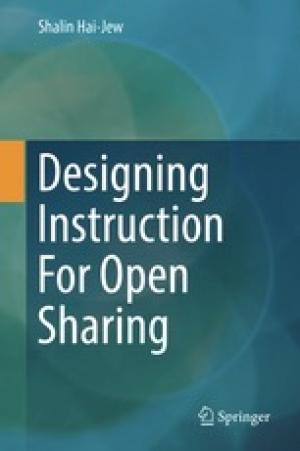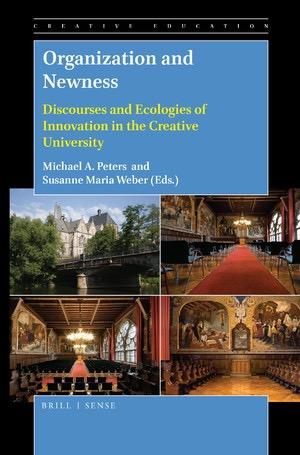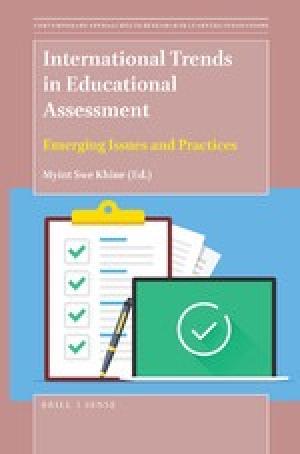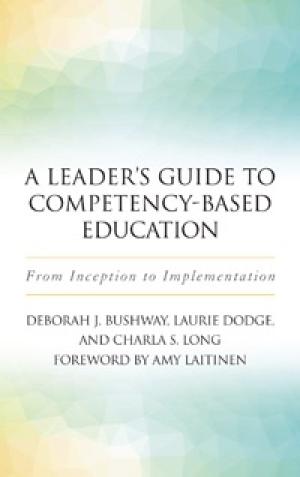Resources
This article presents a pedagogical approach to training seminarians for faith leadership in the era of what Heidi Campbell has called “networked religion.” It argues that the increasing digital mediation of religious practice, expression, and community represents an opportunity for students to explore and inhabit ministry sites and roles from “within” the seminary classroom. Using education scholars' discussions of new digital geographies, gaming scholars' conception of game space, and reflection on classroom‐tested “quick challenges,” the author presents pedagogical principles for designing authentic new media learning experiences. Such activities bridge teaching spaces and ministry spaces to promote active learning through observation and immersion, simulation and role‐playing.

This textbook considers and addresses the design of online learning objects, electronic textbooks, short courses, long courses, MOOC courses, and other types of contents for open sharing. It also considers the design of online mediated communities to enhance such learning. The “openness” may be open-access, and/or it may even be open-source. The learning may range from self-directed and automated to AI robot-led to instructor-led. The main concept of this work is that design learning for open sharing, requires different considerations than when designing for closed and proprietary contexts. Open sharing of learning contents requires a different sense of laws (intellectual property, learner privacy, pedagogical strategies, technologies, media, and others). It requires different considerations of learner diversity and inclusion. It requires geographical, cultural, and linguistic considerations that are not as present in more localized designs. The open sharing aspect also has effects on learner performance tracking (assessments) and learner feedback. This textbook targets students, both undergraduate and graduate in computer science, education and other related fields. Also, professionals in this field managing online systems would find this book helpful. (From the Publisher)

Organization and Newness: Discourses and Ecologies of Innovation in the Creative University offers a view from a perspective of organizational education on the ‘new’, which analyzes the production of the ‘new’ within organizations, in relation to the inherent learning processes. Fundamental for this perspective is the question about the changeability of organizations, especially when these are not viewed only as instrumentally established regulatory structures but rather as social constructs. The contributions of this volume contour the complexity of newness in organization and form a bridge from critical analysis of imperative discourse of newness, to programmatic pleas of an organizational pedagogy, which is normative in nature, for a reconfiguration of organizational and societal relationships. The issue at hand shows how tightly the question about newness is constitutively woven into the self-conception of organizational education and pedagogy. (From the Publisher)

Assessment and evaluation have always been an integral part of the educational process. Quality and purposeful assessment can assist in students’ learning and their achievement. In recent years, considerable attention has been given to the roles of educational measurement, evaluation, and assessment with a view to improving the education systems throughout the world. Educators are interested in how to adequately prepare the young generation to meet the ever-growing demands of the 21st century utilizing robust assessment methods. There has also been increased demand in accountability and outcomes assessment in schools to bridge the gap between classroom practices and measurement and assessment of learners’ performance. This volume contains selected and invited papers from the First International Conference on Educational Measurement, Evaluation and Assessment (ICEMEA). (From the Publisher)

Recognizing the growing interest in competency-based education (CBE) in U.S. higher education, but also the lack of shared standards or practices around it, three experts produced this guide for other educators who are contemplating a move to (or revision of) this type of instructional program. The authors help those who are enthusiastic about CBE avoid pitfalls by offering practical guidance. They strike a cautionary tone throughout, beginning their Introduction with the sobering reality that “there are relatively few schools that have been able to move from interest to implementation” (1). One of the reasons for caution may be that even a definition of CBE is hard to come by. The authors joke that “if you were to ask ten people to define CBE, you would likely hear ten different answers” (2). Instead they offer five “hallmarks” of CBE: (1) “time is variable, and learning is fixed”; (2) there is “required demonstration of mastery or proficiency” which is (3) “determined by rigorous assessments”; CBE is (4) “focused on the student learning journey” and is (5) “offered in a flexible, self-paced approach” (3-4). Many educational programs would claim one or more of these hallmarks, but taken together, they represent a distinct departure from traditional education. CBE’s most famous feature may be the way it changes the relationship between learning and time by replacing the credit hour with continuous direct assessment. As the authors demonstrate, however, this change complicates everything from the transcript to faculty workload to accreditation. CBE’s intense focus on individualized student learning paths and assessment (“assessment on steroids,” as I once heard) is also significant because it changes what learners actually do to learn and what teachers do to teach. Traditional faculty roles are likely to be unbundled, “reassembled” (89), and redefined – or replaced – by roles like coach, tutor, and psychometrician. Given the challenge of defining CBE and the guide’s relative brevity, it would benefit from some case studies, at least for readers who are still trying to gain a clear picture of what a CBE program looks like and why an institution might adopt one in the first place. Cases would presumably also help CBE adopters appreciate why other institutions made the choices they did. The book reads instead like an insider’s guide. The book’s best feature, accordingly, is its soup-to-nuts review of issues that educators must consider when designing competency-based education. Chapters address institutional culture, program design, assessment strategies, staffing and business models, and approval seeking. Readers come away fully aware that CBE is not just a different teaching approach but a potentially radical disruption to education delivery.

This edited volume is built around the belief that educators can no longer ignore issues of cyberethics in either the content they teach or the tools they use to teach it. Over the past few decades the internet, in its various manifestations, has integrated itself seamlessly into our lives to the point that questions about the responsible use of digital tools are unavoidable. Furthermore, most students are now “digital natives,” born into the digital age with no memory of life before the internet. This reality makes it all the more critical to teach cybercitizenship and responsible internet use in the classroom. Emerging Trends in Cyberethics and Education covers an impressively diverse range of topics and contexts in the course of eleven essays. It treats both K-12 and university-level educational contexts and considers classes that take place strictly online as well as those that meet face to face. The essays fall into three broad categories based on how they approach questions of cyberethics in education. First, there are essays that examine the ethical implications of using educational technology in the classroom, including questions of inclusivity and equal access, the quality of education made possible by digital tools and online environments, plagiarism and intellectual property rights, and discerning the accuracy of information available on the web. Second, there are essays that assess the role of educators in responding to challenges students face in online environments outside the classroom, cyberbullying being the most salient example. Finally, there are essays that consider how educators can teach students to be ethical users of the internet, social media, and other digital tools. Nevertheless, it is consistently clear throughout the book that these are not separate questions; the overarching concern among the authors is the cultivation of “cybercitizens” who can better navigate the complex promises and challenges of life in the digital age. The way teachers model responsibility and thoughtfulness in their use of digital tools, the steps they take in responding to violations of their students’ safety and privacy outside the classroom, and their efforts to explicitly teach cyberethics all play a role in this cultivation. Educators in all contexts and subject matter can make use of this volume and the challenging questions it raises; the theology and religious studies classroom is no exception. Religion classes are particularly well situated to cultivate students as citizens because the subject challenges students to critically reflect on their own beliefs and to understand those with very different ways of thinking and acting in the world. Teachers in these subjects must now consider how, in an era in which knowledge and human interaction is increasingly mediated through digital platforms, one can integrate questions about cyberethics and digital citizenship into course design. As the editors of this volume assert, “these discussions should no longer be optional” (xv).

Globalization directly affects all spheres of human activity. Higher education is no exception. Teachers are encouraged to engage emerging technologies and devices in the practice of their teaching with the hope of advancing student learning. The popularity of distance learning is one example of globalization’s reach. Anyone with an Internet connection can pursue higher education. Boundaries and barriers to education are easily crossed through Internet technology. Cooperation across international higher educational boundaries fosters new cooperation among faculty and raises questions about what connotes learning in diverse cultural contexts. Supporting Multiculturalism in Open and Distance Learning Spaces by Elif Toprak and Evrim Genc Kumtepe provides a detailed overview of contemporary cultural issues and complexities in distance education. The book helps teachers, researchers, scholars, and policymakers approach global education from a variety of cultural perspectives. The book is divided into three sections. Section 1, “Cultural Issues in Management and Global Distance Education,” describes the practical experience the authors gained when working in open or distance education environments. For example, this section covers such topics as the influence of gender on educational policies, the role of quality assurance, and the relationship between cultural perspectives and efficient distance learning. Section 2, “Cultural Issues in Theory and Technology,” looks at close cooperation between education, culture, and technology, starting from the rise of the modern digital era to contemporary contexts. It emphasizes how important it is for the educators to “effectively internalize the premodern, modern, and postmodern eras” (1) or risk either losing a necessary contact with their students or misjudging their conduct and aspirations. The important role of virtual culture and culturally-sensitive instructional design principles is foregrounded in Section 3, “Cultural Issues in Instructional Design and Communication.” For example, “Culturally Sensitive Instructional Design Principles for Online Learning Environments,” explores different components of culture in the learning space, analyzes Hofstede’s Theory of Cultural Dimensions, and evaluates other cultural frameworks and their application in distance learning. Supporting Multiculturalism in Open and Distance Learning Spaces is organized to share experiences and find efficient ways to nurture multiculturalism in learning environments. The book will interest both practitioners and scholars as it contains useful information on theoretical approaches to open and distance learning spaces, analysis of relevant studies, and practical advice on how to utilize various aspects of global education. The three sections with their specific foci enable readers to quickly surf the book without having to read every chapter. Each section contains a detailed reference list of literature, which is also an essential benefit of the book.

Co-published by CSU Open Press What is college reading? As college teachers we may assume that it is a process of comprehension, analysis, synthesis, and evaluation. But, as this edited volume overwhelmingly demonstrates, that is often not what it is for college students. How then can college teachers help students practice advanced reading skills? The problem is compounded by the fact that even college teachers who actively want to encourage students to read may unwittingly discourage advanced reading skills by, for example, giving reading quizzes in class (as discussed by Mary Lou Odom in this volume). This edited volume is a great resource for anyone wishing to engage questions about how to improve college reading. Some chapters provide useful practical suggestions. For example, Chris Anson shows how to formulate reading log prompts that require students to engage with the underlying ideas in the reading. Other chapters describe exercises such as in-class annotations (Davies) and says-does columns (Huffman). The volume also contains several insightful discussions of other factors influencing college reading that are more difficult to address, but no less important. For example, some of the authors observe that reading, which we may think of as an individual activity, is a “complex sociolinguistic task” (Hollander et al., 59), and “a collective and holistic enterprise” (Maloy et al., 71). Brian Gogan provides a thoughtful reflection on reading in relation to “threshold concepts” (concepts that students need to grasp in order to move forward in a given disciplinary context). College teachers may use these insights to make reading part of building an intellectual community in the class. The chapter by Young and Potter discusses how students are taught to read in K-12, where students are commonly given a decontextualized passage and then tested on their ability to understand inferences at the level of sentences or paragraphs. These students also commonly learn that for each question asked about the text, there is one correct answer in a multiple-choice format. They receive comparably little training in the advanced reading skills required for college, such as learning how to place a particular text into a connected web of texts that make up an ongoing disciplinary conversation, or asking their own higher-order questions and working with others’ questions that do not have a single “correct” answer. When students start college, therefore, they will commonly think of reading as looking for answers in a decontextualized excerpt; they are not accustomed to looking instead for interesting, productive problems in a web of texts (as also discussed in the afterword by Sullivan and Tinberg). Other authors discuss the importance of instructors connecting reading with writing, drawing on both the writing-to-read and reading-to-write conversations (Anson; Freedman). Some chapters refer to the by now widely known finding that the majority of students do not do what their instructors think they do when completing a research paper assignment, and how to address the implications of this for formulating new types of writing assignments (Horning; Young and Potter). Related to this, Laura Davies points out in her chapter that students who write poorly are usually referred to the university’s writing center, rather than asked about their reading skills, which underlie their writing. Several chapters also touch on how reading might be given a stronger institutional footing through, for example, being explicitly incorporated into writing-across-the-curriculum initiatives (Odom), linking courses (Sturtz et al.), or providing a reading-across-the-curriculum community on campus (Hollander et al.). In sum, as Leonora Freedman observes in her chapter, stronger responses to the problem of how to teach college reading skills can lead to increased student engagement as well as increased faculty morale. This edited volume is a very good place to start. It deserves a wide readership among college faculty and administrators, and this goal will no doubt be made easier by the fact that the publishers have made it free to download at wac.colostate.edu.

How Humans Learn argues that our natural systems for learning are connected to human evolution and psychological development, and a better understanding of the way humans learn can help determine what will and will not work in the classroom. Instead of presenting evidence of why a teaching or learning strategy works, Eyler identifies five patterns of learning drawn from psychology, evolutionary biology, and neuroscience to explain why students learn more when certain techniques are chosen over others: curiosity, sociality, emotion, authenticity, and failure. He draws on seminal works in the scholarship of teaching and learning such as that of Bain (What the Best College Teachers Do, 2004) and Fink (Creating Significant Learning Experiences, 2013), and his patterns overlap with principles of learning identified by other scholars (Ambrose et al., How Learning Works, 2010; Davis & Arend, Facilitating Seven Ways of Learning, 2013). In each chapter Eyler offers examples of classroom practice from various disciplines in Western higher education and provides helpful “key takeaways” that summarize major points and highlight practical suggestions. For example, to stimulate curiosity we can incorporate inquiry, discussion-based pedagogies, and backward design that structures courses from the outset so that every element is tied to an essential question that our course helps students answer (Wiggins & McTighe, Understanding by Design, 2005). To promote sociality, we can use collaborative learning strategies, peer instruction, storytelling, and role-immersion games such as Reacting to the Past. To ensure that emotions guide thinking rather than undermine it, we can demonstrate the relevance of the material and embody “pedagogical caring” by giving frequent feedback, having high expectations for students, and coming to class prepared. To encourage an authentic learning experience, we can allow students to engage in applied problem solving, incorporate experiential and service learning, and bring our own research into the classroom. Finally, we can allow students opportunities to fail when the stakes are low, then give them support and guidance to understand from failure and cultivate growth mindsets, grit, agency, and other resiliency strategies. Those fascinated by evolutionary developmental biology will likely enjoy the entire book, while others may gravitate towards particular chapters that address topics of interest. Eyler mentions religion only once in the book, during discussion of the “emotional trauma” that can result when students alter knowledge structures or “mental models” tied to their personal beliefs and deeply held convictions (192), but his discussion of “cognitive realism” – when the brain registers a situation as being realistic – also poses interesting challenges for instructors of religion (154). Theological education affords various types of immersive experiences for students, but what sorts of “authentic activities” and “immersions” might instructors of religious studies offer students, especially those who teach in public colleges and universities? Although there are clearly opportunities to apply tools and methodologies from the study of religion to conduct field research or wrestle with problems of the world (155), what characteristics would make other assignments or activities “compellingly” real (157) without being religious?

During a job interview over a decade ago for a position in Christian theology, I mentioned how I incorporate non-Christian texts when teaching Christology (the study of Christ). One member on the committee was nonplussed, demanding an explanation. A rare occurrence then, it would be quite shocking now, as the emerging field of interreligious (or interfaith) studies is becoming more common. What exactly, though, are its methods, aims, definition, scope, areas of expertise, value, strengths, and limitations? Judged by the slash in this book’s title, much still needs to be formulated. This collection of eighteen essays (and an introduction by the editors) provides a solid foundation for furthering such attempts. The book is the fruit of a 2016 conference at California Lutheran University. Part One maps the field, and here the diversity of US colleges and universities augment the breadth and flexibility of definitions provided. Most contributors to this book prefer the term “interreligious” over “interfaith” (I prefer the latter, but much depends on how you define faith and religious). A strong current in the essays is pragmatic: seeing the benefits an interfaith pedagogy can bring to a range of disciplines in the humanities – raising the profile of religious studies, and religious literacy, more generally. Some contributors in Part One, however, seem constricted by the academy’s theology / religious studies debate and argue about where interfaith / interreligious studies best belong, an argument that requires one to believe in the rigidity of such departmental boundaries in the first place. Part Two examines interfaith pedagogical philosophies and specific curricula. Professors and future educators (at all levels) will benefit from how the contributors employ specific texts, classroom activities, and assignments. I am already thinking of how I can use some of these ideas in my World Religions module; for example, adding a more expansive sensorial list of preparatory questions for students before they visit religious sites and places of significance. Part Three focuses on the challenges and benefits this field provides for students and educators; for example, how studying anti-racist approaches or ecological issues through an interfaith lens develops a more expansive, nuanced picture, while also encouraging deeper interfaith participation and engagement. Finally, Part Four (my favorite section overall) presents the value of interfaith studies beyond the classroom, with essays on its positive impact for religious leaders, for those in prisons, for those seeking to enhance secular careers (because of their multifaith literacy) – and civically in promoting a truly interfaith and pluralist society. On this last note, Dublin (my adopted hometown as a New Yorker) was the first major city to publish an interfaith charter. This book, however, is US-focussed (or limited, depending on one’s view): it could seem to the uninitiated that the field is primarily of relevance to the United States. Hopefully a second volume is planned to expand the focus beyond the confines of the fifty states, and not just to Europe, but globally. By the way, in 2019 (and beyond), if anyone is asked how to teach Christology (or a similar topic), I suggest you bring in as many faith-positions as possible – that is where the fields of theology and religious studies are heading.
Wabash Center Staff Contact
Sarah Farmer, Ph.D
Associate Director
Wabash Center
farmers@wabash.edu